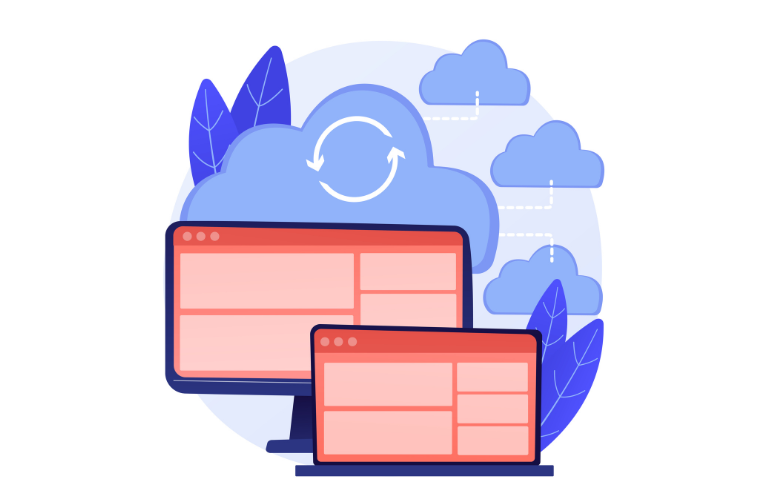When choosing between OpenRouter vs. HuggingFace for your AI project, the decision can feel overwhelming. Both platforms offer powerful tools for accessing large language models (LLMs), but they cater to different needs. OpenRouter simplifies access to multiple LLMs through a unified interface, while HuggingFace thrives as an open-source hub for models, datasets, and community collaboration.
This article breaks down their features, pricing, use cases, and implementation steps to help developers and businesses pick the right free LLM API. Let’s dive in to solve your pain points, like slow performance or complex integrations, with actionable insights.
Table of Contents
What is OpenRouter?
OpenRouter is a unified platform designed to streamline access to various LLMs from multiple providers. It scouts for the best prices, latencies, and throughputs, making it ideal for developers seeking cost-effective and high-performance solutions. With its API, you can switch between models without changing code, saving time and effort.
OpenRouter’s strength lies in its flexibility. It load-balances requests across top providers to ensure uptime and allows customization of provider preferences. Whether you’re building a chatbot or automating content creation, OpenRouter’s unified interface simplifies the process.
What is HuggingFace?
HuggingFace is a leading AI community platform known as the “GitHub of machine learning.” It offers a vast repository of over 300,000 pre-trained models, datasets, and tools like Transformers and Tokenizers. Developers can build, share, and deploy models for tasks like natural language processing (NLP), computer vision, and audio processing.
HuggingFace’s open-source ecosystem fosters collaboration, making it perfect for researchers and businesses. Its free tier includes access to models and datasets, while paid plans unlock advanced features like the Enterprise Hub for secure, private deployments.
Key Features Comparison: OpenRouter vs. HuggingFace
Understanding the core features of OpenRouter vs. HuggingFace helps clarify which platform suits your needs. Here’s a quick comparison:
- OpenRouter Features:
- Unified interface for multiple LLMs.
- Automatic load-balancing for high uptime.
- API for seamless integration across providers.
- Flexible pricing with a $2 one-time payment option.
- HuggingFace Features:
- Extensive library of 300,000+ models and datasets.
- Open-source tools like Transformers and Diffusers.
- Spaces for hosting interactive model demos.
- Free tier with optional $9/month Pro plan.
Both platforms support Windows, Mac, Linux, cloud, and mobile deployments, but HuggingFace’s community-driven approach contrasts with OpenRouter’s focus on streamlined LLM access.
Pricing: Which Offers Better Value?
Cost is a critical factor when comparing OpenRouter vs. HuggingFace. Here’s how they stack up:
- OpenRouter Pricing:
- Free tier with limited usage.
- $2 one-time payment for expanded access.
- Pay-per-use model for heavy workloads, ideal for scaling.
- HuggingFace Pricing:
- Free tier with access to models, datasets, and Spaces.
- $9/month Pro plan for additional compute and features.
- Enterprise Hub for custom pricing, targeting businesses.
OpenRouter’s low-cost entry makes it attractive for small projects, while HuggingFace’s free tier is generous for community-driven development. Choose based on your budget and scaling needs.
Use Cases: Where Each Shines
Both platforms serve diverse applications, but their strengths differ. Let’s explore use cases for OpenRouter vs. HuggingFace:
- OpenRouter Use Cases:
- Business Solutions: Automate customer support with low-latency LLMs.
- Content Creation: Generate marketing copy using cost-effective models.
- Research: Test multiple LLMs for academic projects without code changes.
- HuggingFace Use Cases:
- NLP Development: Fine-tune models for sentiment analysis or chatbots.
- Computer Vision: Deploy image recognition models for e-commerce.
- Collaborative Research: Share datasets and models for team projects.
OpenRouter excels in flexibility across providers, while HuggingFace is ideal for deep customization and community collaboration.
Implementation: Getting Started with OpenRouter
OpenRouter’s API makes integration straightforward. Here’s a simple example to call an LLM using Python:
import requests
url = "https://openrouter.ai/api/v1/chat/completions"
headers = {
"Authorization": "Bearer YOUR_API_KEY",
"Content-Type": "application/json"
}
data = {
"model": "gpt-4o-mini",
"messages": [{"role": "user", "content": "Hello, how can I use OpenRouter?"}]
}
response = requests.post(url, json=data, headers=headers)
print(response.json())Time-Saving Tip: Use OpenRouter’s SDKs for Python, JavaScript, or other languages to reduce setup time. Store your API key securely to avoid repeated configuration.
Implementation: Getting Started with HuggingFace
HuggingFace’s Transformers library simplifies model deployment. Here’s how to use a pre-trained model for text generation:
from transformers import pipeline
generator = pipeline("text-generation", model="gpt2")
output = generator("Once upon a time", max_length=50)
print(output[0]["generated_text"])Shortcut: Leverage HuggingFace Spaces to test models in-browser without local setup. This saves time for prototyping and reduces compute costs.
Performance and Scalability
Performance is a pain point for many developers. When comparing OpenRouter vs. HuggingFace, consider:
- OpenRouter: High availability through load-balancing across providers. Scales dynamically for real-time applications like chatbots.
- HuggingFace: Scales well for community projects but may require additional compute for large models like Bloom. Enterprise Hub offers robust scaling for businesses.
For low-latency needs, OpenRouter’s provider optimization is a game-changer. HuggingFace suits projects where model variety and fine-tuning are priorities.
Community and Support
Both platforms offer strong support, but their approaches differ:
- OpenRouter: Provides 24/7 live support, phone support, and online documentation. Ideal for developers needing quick API assistance.
- HuggingFace: Community-driven support with forums, webinars, and documentation. Enterprise users get dedicated support, but free-tier users rely on community resources.
HuggingFace’s vibrant community is a boon for collaborative projects, while OpenRouter’s direct support ensures faster issue resolution.
Pros and Cons: OpenRouter vs. HuggingFace
Weighing the pros and cons helps finalize your choice:
- OpenRouter Pros:
- Unified access to multiple LLMs.
- Cost-effective with minimal upfront costs.
- High uptime and low latency.
- OpenRouter Cons:
- Limited model customization compared to HuggingFace.
- Fewer community-driven resources.
- HuggingFace Pros:
- Massive model and dataset library.
- Strong open-source community.
- Flexible for fine-tuning and prototyping.
- HuggingFace Cons:
- Larger models require significant compute.
- Free-tier support is community-based.
Which Should You Choose?
Choosing between OpenRouter vs. HuggingFace depends on your project goals:
- Choose OpenRouter if: You need a cost-effective, low-latency solution for accessing multiple LLMs without code changes. Ideal for businesses automating tasks or developers testing models across providers.
- Choose HuggingFace if: You’re focused on deep model customization, NLP, or collaborative research. Perfect for developers leveraging open-source tools and datasets.
Actionable Tip: Start with OpenRouter’s free tier for quick LLM access, then explore HuggingFace’s Transformers for advanced fine-tuning as your project grows.
Integration with Other Tools
Both platforms integrate seamlessly with modern tools:
- OpenRouter: Supports LiteLLM, Tune AI, and Amazon SageMaker for extended functionality. Its API works with 38+ integrations.
- HuggingFace: Integrates with PyTorch, TensorFlow, and 152+ tools, including Claude and Marqo. Spaces enhance compatibility with web-based apps.
- Shortcut: Use HuggingFace’s Datasets library to pair with OpenRouter’s API for hybrid workflows, combining model access with rich datasets.
Ethical Considerations
Ethics matter in AI development. OpenRouter emphasizes responsible AI with safeguards against misuse and transparent operations. HuggingFace’s open-source models may carry biases, so test outputs carefully to avoid harmful content. Both platforms prioritize user data protection, but HuggingFace’s Enterprise Hub offers advanced security for sensitive projects.
Final Thoughts
When deciding between OpenRouter vs. HuggingFace, consider your project’s scale, budget, and customization needs. OpenRouter’s unified interface and low-cost access make it a go-to for fast, scalable LLM deployment. HuggingFace’s vast model library and community support shine for research and deep customization. Try both free tiers to test their APIs and see which aligns with your workflow.
FAQs: OpenRouter vs. HuggingFace
1. What is the main difference between OpenRouter and HuggingFace?
OpenRouter provides a unified interface to access multiple large language models (LLMs) from various providers, focusing on low latency and cost-effectiveness. HuggingFace is an open-source platform with a vast library of over 300,000 models and datasets, ideal for community collaboration and model fine-tuning.
2. Is OpenRouter or HuggingFace better for beginners?
HuggingFace is more beginner-friendly due to its free tier, extensive documentation, and user-friendly Spaces for testing models without coding. OpenRouter suits beginners who need quick API access to LLMs but may require basic API knowledge.
3. Can I use OpenRouter and HuggingFace for free?
Yes, both offer free tiers. OpenRouter’s free plan includes limited LLM access, while HuggingFace provides free access to models, datasets, and Spaces. HuggingFace also offers a $9/month Pro plan, and OpenRouter has a $2 one-time payment option for expanded features.
4. Which platform is better for low-latency AI applications?
OpenRouter excels for low-latency applications, as it load-balances requests across providers to ensure high uptime and fast responses. HuggingFace is better for deep customization but may require additional compute for large models, potentially impacting speed.
5. How do OpenRouter and HuggingFace handle integrations?
OpenRouter integrates with 38+ tools like LiteLLM and Amazon SageMaker via its API. HuggingFace supports 152+ integrations, including PyTorch, TensorFlow, and Claude, making it highly versatile for combining with other frameworks.
6. Can I fine-tune models on OpenRouter or HuggingFace?
HuggingFace is ideal for fine-tuning, offering tools like Transformers and APIs to customize models. OpenRouter focuses on accessing pre-trained LLMs and does not emphasize fine-tuning, making it less suitable for this purpose.
7. Which platform is better for collaborative AI projects?
HuggingFace shines for collaboration, with its community-driven hub, shared datasets, and Spaces for showcasing models. OpenRouter is more suited for individual or business use cases needing fast, unified LLM access without extensive collaboration.




